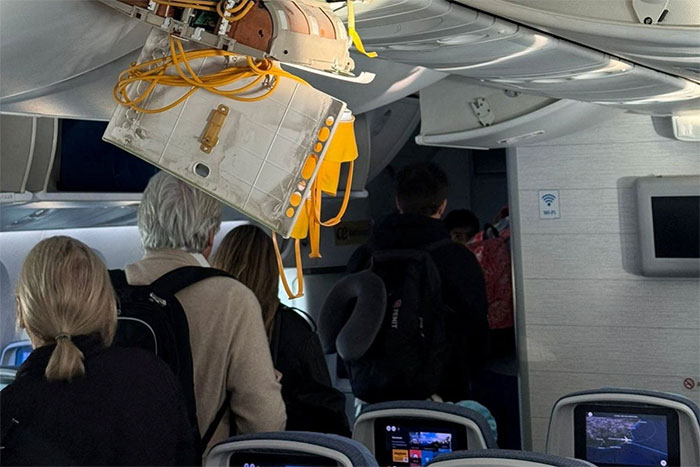AI system helps aircraft 'cope' with turbulence
Turbulence that affects planes could become a thing of the past thanks to a new AI system that helps flying vehicles learn to adjust to turbulence in just minutes.
Scientists at Embry-Riddle Aeronautical University (USA) have developed a technique that can minimize the impact of turbulence on flying vehicles, especially unmanned aerial vehicles (UAVs).

Turbulence is a terrible experience when flying - (Photo: REUTERS).
The technique relies on an artificial intelligence (AI) system called FALCON to automatically adjust flight to accommodate external disturbances.
Turbulence is changes in air pressure that cause the aircraft to vibrate. FALCONs are trained to understand the fundamentals of turbulence and adapt to any conditions.
The AI system is based on the Fourier method, which uses complex sine waves to represent data. According to LiveScience on November 11, the research team tested the AI system in a wind tunnel at the California Institute of Technology (Caltech, USA), using an aircraft wing equipped with pressure sensors to represent a UAV. FALCON will use the sensors to sense changes in pressure and adjust altitude and yaw as needed to maintain stability.
The team found that after nine minutes of learning, continuously trying to adapt to changing turbulence and feedback the results, FALCON could maintain the stability of the aircraft wing in the wind tunnel.
"Tests at Caltech's wind tunnel show that FALCON can learn in minutes, with the potential to scale up to larger aircraft ," said professor Hever Moncayo, who works at Embry-Riddle University.
By enabling automatic adaptation to turbulence, the research has the potential to help UAVs and commercial aircraft fly more smoothly in the future. The team also proposes the possibility of sharing environmental data between aircraft to warn of turbulence.
The next phase of the research is to reduce FALCON's learning time. This could be the team's biggest challenge, as the ability to quickly adapt to environmental conditions is essential for practical solutions to turbulence.
There are also other real-world challenges, especially because of the varied and unpredictable wind conditions.
The research was published in the journal NPJ Robotics .
- Video: The culprit makes the aircraft jump
- Air turbulence detection system for aircraft
- How do flights predict turbulence?
- Air turbulence while flying is not as scary as you think
- How to deal with turbulence on a plane?
- Where in the world is prone to turbulence like Singapore and Qatar planes?
- Causes of cloud hole formation
- Evaluate the possibilities that make Flight 447 disappear
- Why don't commercial planes fly higher into space?
- Body reaction when the plane falls and how to
- The system helps pilots land when they don't see the runway
- Lockheed Martin's air defense system
 The world's first sexless AI voice
The world's first sexless AI voice This cool t-shirt will make you invisible to AI
This cool t-shirt will make you invisible to AI AI can predict personality only through selfie photos
AI can predict personality only through selfie photos The world-famous chess player lost to Golaxy before, artificial intelligence 'made in China'
The world-famous chess player lost to Golaxy before, artificial intelligence 'made in China'